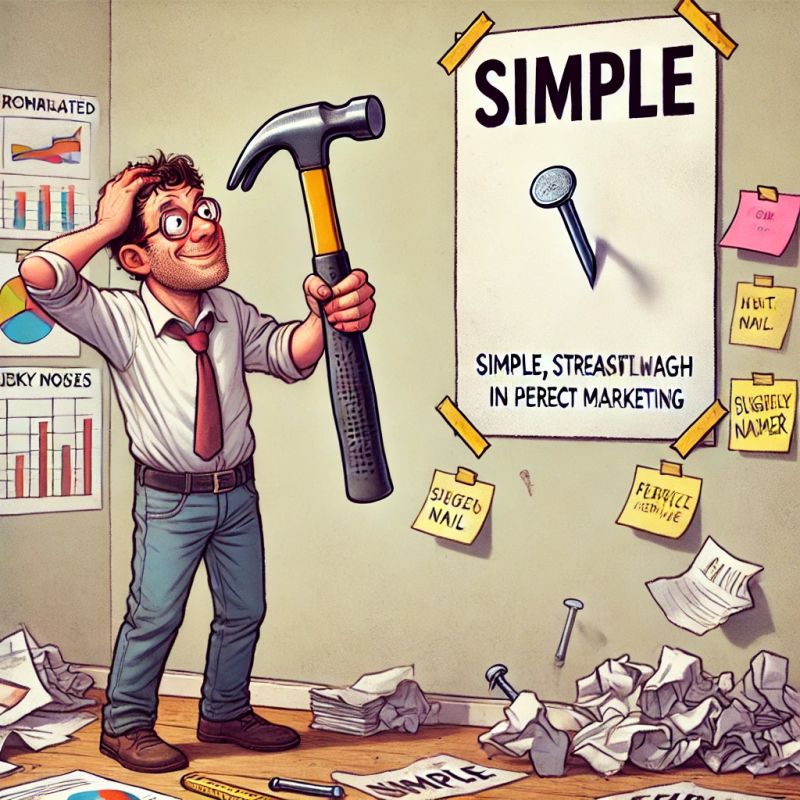Every day, businesses leave revenue on the table because they fail to harness buyer intent effectively. It’s not just about chasing curiosity—it’s about strategically converting signals into scalable outcomes. This isn’t a list of bullet points or another guide to file away. This playbook is your strategic guide, engineered to unlock hidden growth opportunities and crush revenue goals with precision. Let’s get granular.
Step 1: Total Addressable Market (TAM)
Why TAM Matters in B2B Marketing Playbook: TAM isn’t just a number—it’s the ceiling of your ambition. Miscalculate it, and you’re either overreaching or undercutting your potential. Understanding TAM with precision is the foundation of sound revenue planning.
Execution Frameworks:
- Top-Down Approach: Pull data from analyst reports and market intelligence to estimate the universe you’re playing in.
- Bottom-Up Approach: Ground your TAM in real-world data by calculating based on your pricing model and potential customers.
- Value-Theory Model: Quantify how your solution changes outcomes for customers and projects that impact across your target market.
Key Metrics:
- Total market size (in dollars)
- Share of TAM targeted by specific campaigns or segments
Pro Tips:
- Validate TAM with qualitative insights from industry experts or customer surveys. It’s amazing how often theory crumbles under the weight of reality.
- Reassess your TAM annually. Markets evolve, and so should your perspective.
Step 2: Segmentation
Why Segmentation Matters in B2B Marketing Playbook: Shooting at the entire market is a great way to miss everything. Segmentation allows you to focus your firepower where it counts, creating tailored strategies for meaningful impact.
Execution Frameworks:
- Firmographics: Industry, geography, company size, and growth trajectory.
- Behavioral Clues: Intent signals, website behavior, content downloads, and other breadcrumbs left by your audience.
Key Metrics:
- Conversion rates by segment
- Cost-per-acquisition (CPA) per segment
Pro Tips:
- Use clustering algorithms or AI-powered tools to uncover non-obvious segment patterns.
- Test micro-segments with experimental campaigns. Think of it as small bets before placing a big one.
Step 3: Ideal Customer Profile (ICP)
Why ICP Matters in B2B Marketing Playbook: Not every lead is created equal. Your ICP is your north star, ensuring you focus on the accounts that will drive the highest lifetime value (LTV) and least churn.
Execution Frameworks:
- Data Enrichment Tools: Platforms like Clearbit or ZoomInfo can give you detailed insights into potential customers.
- Pattern Recognition: Analyze your best-performing customers to identify commonalities.
Key Metrics:
- Percentage of pipeline from ICP-aligned accounts
- Win rates for ICP accounts versus non-ICP accounts
Pro Tips:
- Keep your ICP dynamic. Update it quarterly to reflect shifts in market conditions or internal learnings.
- Involve cross-functional teams in ICP definition—marketing sees one side, sales sees another, and customer success sees the aftermath.
Step 4: Persona Development
Why Persona Matters in B2B Marketing Playbook: Marketing to generic personas is like shooting into the void. To connect, you need to understand not just the job titles but the human aspirations, frustrations, and behaviors behind them.
Execution Frameworks:
- Empathy Maps: Map out what your persona thinks, feels, says, and does.
- Jobs-to-Be-Done (JTBD): Focus on the outcomes your personas are seeking, not just their job responsibilities.
Key Metrics:
- Persona-specific conversion rates
- Content engagement by persona
Pro Tips:
- Sales reps are a goldmine for persona insights. Spend time shadowing their calls.
- Go beyond demographics; dig into psychographics and behavioral patterns.
Step 5: Value Proposition
Why Value Proposition Matters in B2B Marketing Playbook: In a noisy market, a weak value proposition is the fastest way to get ignored. Your value proposition must slice through the clutter and scream, “This is the answer you’ve been looking for!”
Execution Frameworks:
- Value Proposition Canvas: Match your product’s features with customer pain points and aspirations.
- FAB Model: Features describe the product, advantages explain its superiority, but benefits connect emotionally.
Key Metrics:
- A/B test results on value proposition messaging
- Conversion rates on assets containing your value proposition
Pro Tips:
- Run your value prop through the “so what?” test. If the answer isn’t crystal clear, refine it.
- Don’t confuse buzzwords for impact. Clarity always wins.
Step 6: Marketing Plays
Why it Matters in B2B Marketing Playbook: Random acts of marketing yield random results. Coordinated plays across channels ensure your message resonates at every stage of the buyer’s journey.
Execution Frameworks:
- Full-Funnel Marketing: Tailor strategies for TOFU, MOFU, and BOFU.
- Channel Synergy: Combine email, paid ads, ABM, webinars, and website CRO.
Key Metrics:
- MQLs and SQLs generated
- ROI per channel
Pro Tips:
- Consistently iterate and optimize. The first version is rarely the best version.
- Build retargeting audiences for those who engage but don’t convert.
Step 7: SDR/BDR Alignment
Why SDR Alignment Matters in B2B Marketing Playbook: SDRs/BDRs are where marketing’s intent meets sales’ execution. Without tight alignment, you’re leaving deals on the table.
Execution Frameworks:
- Cadence Playbooks: Map follow-up sequences to buyer journeys.
- Persona-Based Objection Handling: Train teams to overcome hesitations specific to your ICP personas.
Key Metrics:
- Opportunity conversion rates from SDR outreach
- Speed-to-lead response times
Pro Tips:
- Role-play objection handling during team stand-ups. It’s awkward but effective.
- Gamify SDR performance with incentives tied to KPIs.
Step 8: Sales Activation
Why It Matters in B2B Marketing Playbook: Sales doesn’t just need leads; they need tools, insights, and narratives to close. Sales activation bridges the gap between potential and profit.
Execution Frameworks:
- Enablement Kits: Include ROI calculators, customer stories, and competitive intel.
- Scenario-Based Training: Simulate real-life deal scenarios.
Key Metrics:
- Sales cycle velocity
- Close rates
Pro Tips:
- Equip sales teams with dynamic battle cards that update with CRM data.
- Encourage storytelling. Data persuades, but stories close deals.
Step 9: Revenue Operations (RevOps)
Why RevOps Matters in B2B Marketing Playbook: Without RevOps, you’re managing silos, not systems. Alignment across marketing, sales, and customer success creates predictability in revenue.
Execution Frameworks:
- Revenue Attribution Models: Track which channels, campaigns, and plays drive the most revenue.
- Unified Dashboards: Provide transparency for cross-functional teams.
Key Metrics:
- CLTV-to-CAC ratio
- Revenue retention rates
Pro Tips:
- Conduct quarterly audits to identify bottlenecks in the revenue pipeline.
- Automate insights wherever possible to minimize human error.
Step 10: Customer Wins
Why it Matters in B2B Marketing Playbook: Your current customers are your best marketers. Success stories build trust, and trust drives new revenue.
Execution Frameworks:
- Case Studies: Showcase measurable results tied to customer success.
- Customer Advocacy Programs: Incentivize happy customers to spread the word.
Key Metrics:
- Upsell/cross-sell revenue
- Net Promoter Score (NPS)
Pro Tips:
- Involve customers in thought leadership activities like webinars and blogs.
- Keep your case studies fresh. Nothing screams outdated louder than a case study with last decade’s metrics.
By following these steps with rigor, experimentation, and alignment, you’re not just chasing revenue—you’re architecting it. Each phase of the playbook is a gear in a machine, and when they turn together, you’ll see intent transformed into scalable, predictable growth. The playbook isn’t static; it’s a living strategy. Adapt, refine, and let the numbers tell your story.






